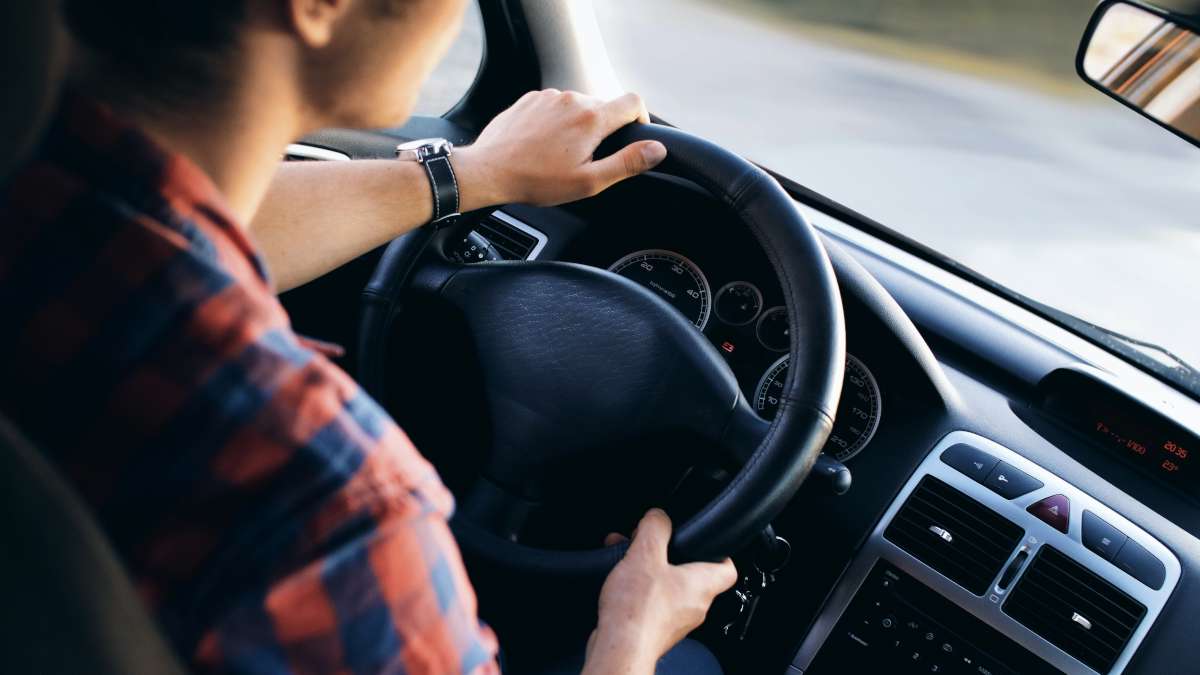
Admit it. There was a time that you weren’t yourself behind the wheel — and possibly exposed to the dangers of aggressive driving. You had your reasons for sure: you were late for something, or some other aggressive driver got in your face. You were stressed, frustrated, impatient, annoyed, afraid. Whatever the reason, you were driving. In a bad mood.
[Next scene 🙂 ]
Your face turns ruby red. Your capillaries shape the subway map of New York on your forehead. You let out a couple of four-letter words and pound on the steering wheel three times. Then the rage passes and you begin to calm down. No harm done, everyone continues on their way.
Unfortunately, that is not always the case. Sometimes, things get out of hand and the dangers of aggressive driving are getting real.
What is aggressive driving?
Aggressive driving is when a driver deliberately commits several traffic offences that may endanger people or property. Notably, this kind of dangerous driving behavior may include a combination of:
- Speeding
- Tailgating
- Running red lights
- Ignoring road signs
- Cutting in front of another driver
- Changing lanes without signaling
- Weaving in and out of traffic
- Blocking cars, attempting to pass or change lanes
- Passing on the shoulder
- Passing in zones where it is prohibited
In addition, angry drivers may further try to intimidate other people by attacking them verbally or even physically; this is called road rage. While aggressive driving is deemed a traffic offense, road rage has the potential to result in a criminal offense. And yes, they can both have negative consequences for the parties involved.
So, what is it that makes people snap sometimes, when driving? Why would anyone intentionally engage in driving behavior that could harm people and/or property?
The “agrrry” tribe: why do some people snap?
Anger, impatience, stress, competition, and punishment seem to be the five emotional culprits for aggressive driving, states the AAA. Yet, a study conducted by a Temple University Fox School of Business professor, offers a deeper perspective.
According to the study, it all comes down to people defending their territory. Meaning, when someone gets close to your personal space, you will probably react with a “growl”. On top of that, people who perceive their car as a reflection — or extension — of themselves are more likely to behave aggressively. Moreover, increased materialism, compulsiveness and antisocial personality traits are also linked to dangerous driving tendencies.
What are the dangers of aggressive driving?
The AAA Foundation for Traffic Safety claims that almost 90% of drivers admit to some form of aggressive driving. Usually tailgating or flashing bright headlights. And even more alarming is the annual increase in incidents, caused by a dangerous driving attitude. With this in mind, let’s examine the dangers of aggressive driving.
1. Traffic collisions
These happen every day. The severity varies, but the reasons stay the same. Studies show that one of the most common ones is speed. To clarify, the risk of a car accident increases when vehicles travel much faster or slower than average.
2. Road injuries / Fatality / Damage of property
NHTSA statistics show that thousands of people are killed every year in the U.S., and millions are badly injured. Accordingly, property damage does not fall far behind.
3. Fines/ Penalties / Jail time
One may get a ticket for aggressive driving, pay costly fines and lose demerit points on their driving license. More severe penalties may include a suspended license, enrollment in a strict behavior modification class, and even jail time.
4. Hidden costs
Besides the possibility of fines and penalties, there are other costs that may fall on aggressive drivers. It is a fact that small changes to driving habits directly affect fuel efficiency. That is to say, aggressive driving patterns cause sudden acceleration and hard braking. In effect, this translates into high fuel consumption that may well rise to 40% above normal, if not more. Then there’s the cost for vehicle repairs that can be excessively high, depending on the crash impact and overall circumstances.
5. Environmental impact
You probably didn’t see this coming, but aggressive driving affects the environment too. Data show that not only fuel consumption, but also emission rates are influenced by how aggressively the vehicle is driven. And, let’s not forget that noise pollution is yet another undesirable result of aggressive driving.
How to deal with the dangers of aggressive driving
Dangerous driving situations can be very scary, especially if you are on the receiving end. But fear not! If you find yourself dealing with aggressive drivers, you can take a few simple steps to keep yourself safe:
- Stay calm and keep focused on the road.
- Try to avoid aggressive drivers.
- If for some reason you can’t, do not make eye contact.
- Ignore any gestures and — by all means — do not return them!
- Try to be empathetic; they may be having a really bad day or may be suffering from a mental illness.
- Make sure you wear your seat belt. If you have any passengers, urge them to do the same.
- Remember not to block the passing lane.
- Call 911 or your local police station to report the incident, first chance you get. To that end, keep notes on the vehicle, license plate number, location and direction of travel.
How to avoid being an aggressive driver
Anyone can become an aggressive driver some time in their lives. Hence, it is important to recognize the factors that may affect your mood while driving. Is there something going on in your personal life? Or is it just traffic? The first thing to remember is to stay in control of your driving and not act on negative emotions. Nevertheless, if you feel your emotions taking over the steering wheel, use the tips below to come around:
- Allow yourself plenty of time to get to your destination. Evidently, this will reduce your stress levels, if for some reason you feel anxious to get there.
- Remain within speed limits.
- Stop at red lights and stop signs. By the same token, never run yellow lights.
- Concentrate on driving, not on your cell phone or other distractions.
- Learn to share the road.
- Do not allow other drivers’ behavior to affect your mood. Instead, try to nurture a defensive driving attitude.
- If you feel yourself getting worked up, focus on your breathing; relax your body, and your mind will follow.
- Resist the temptation to punish other drivers for making mistakes. They’re only human, like you; let bygones be bygones.
- Practice patience and do not retaliate if provoked.
- If you have a competitive personality and enjoy challenging other drivers, you must find a way to control this tendency. There is no competition here; remind yourself that the most important thing is to arrive at your destination safely!
- If you cannot regulate your aggressive behavior on your own, please, do not be embarrassed to seek professional help.
A call to arms for Fleet Managers
Managing a fleet business is a very demanding job. As if this wasn’t enough, a fleet manager has to be prepared for the everyday dangers of aggressive driving. Surely, your fleet employees’ safety is your number one priority. But, how can you protect them when you are in the office, taking care of a million other things?
Luckily, there are some practices that can make a big difference. Refining your soft skills, believe it or not, will help you get ahead of any potential problems.
First and foremost, you need to create a safe-driving philosophy among your drivers, to inspire safer, more responsible driving habits; especially if you suspect you might be having an aggressive driver case within your fleet. Even if you don’t have such a driver, you still need to protect your employees from other drivers’ dangerous behaviors.
At first glance, vehicle management software may seem unnecessary. However, the price to pay in the aftermath of aggressive driving may be irredeemable. If anything, a vehicle management system will help you be proactive. Apart from running vehicle diagnostics, you can set goals and expectations for driver performance. Also, that way, you can incentivize drivers to do a good job.
That’s how you will promote safe driving habits and guide your drivers into protecting themselves. Not to mention, it will help you build a good reputation for your fleet business in the long term.
TL;DR
Everyone has bad days behind the wheel. Sometimes, it may seem extremely difficult to keep your emotions from impairing your driving ability. First thing to remember is that you can’t control other drivers’ attitudes. But you can control your reaction to them. Consider that the other driver may be having a bad day, and practice empathy. Besides, fleet businesses and professional drivers have the responsibility to drive safely and set an example for other drivers.


